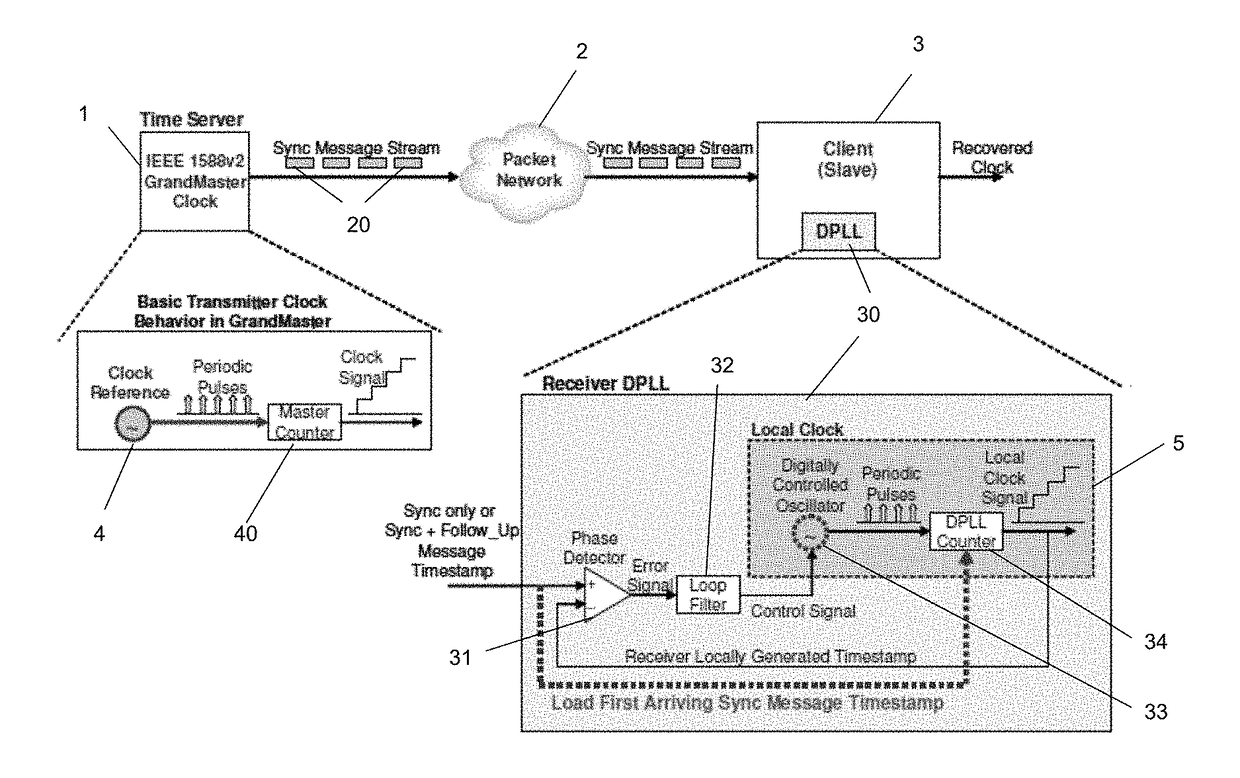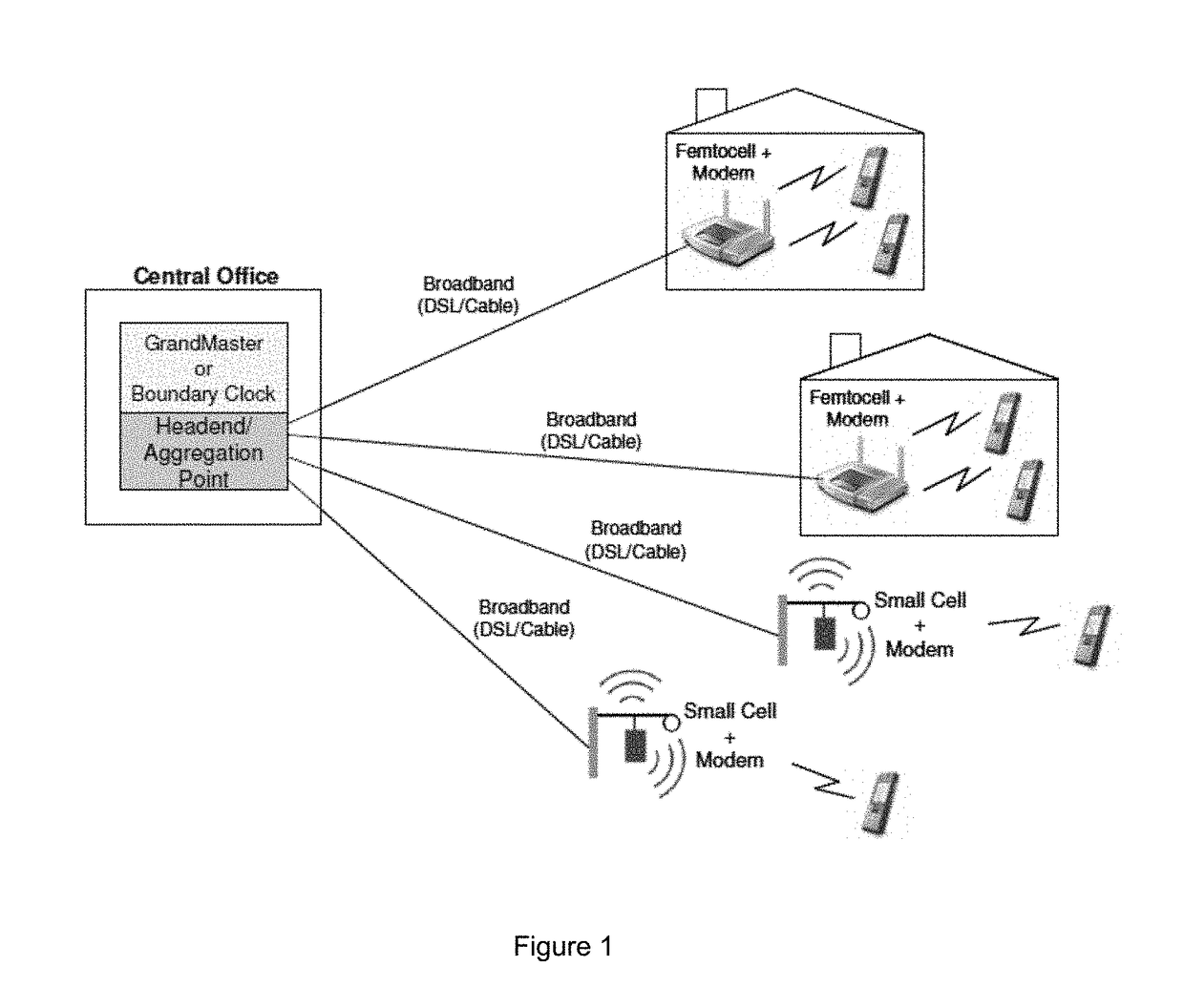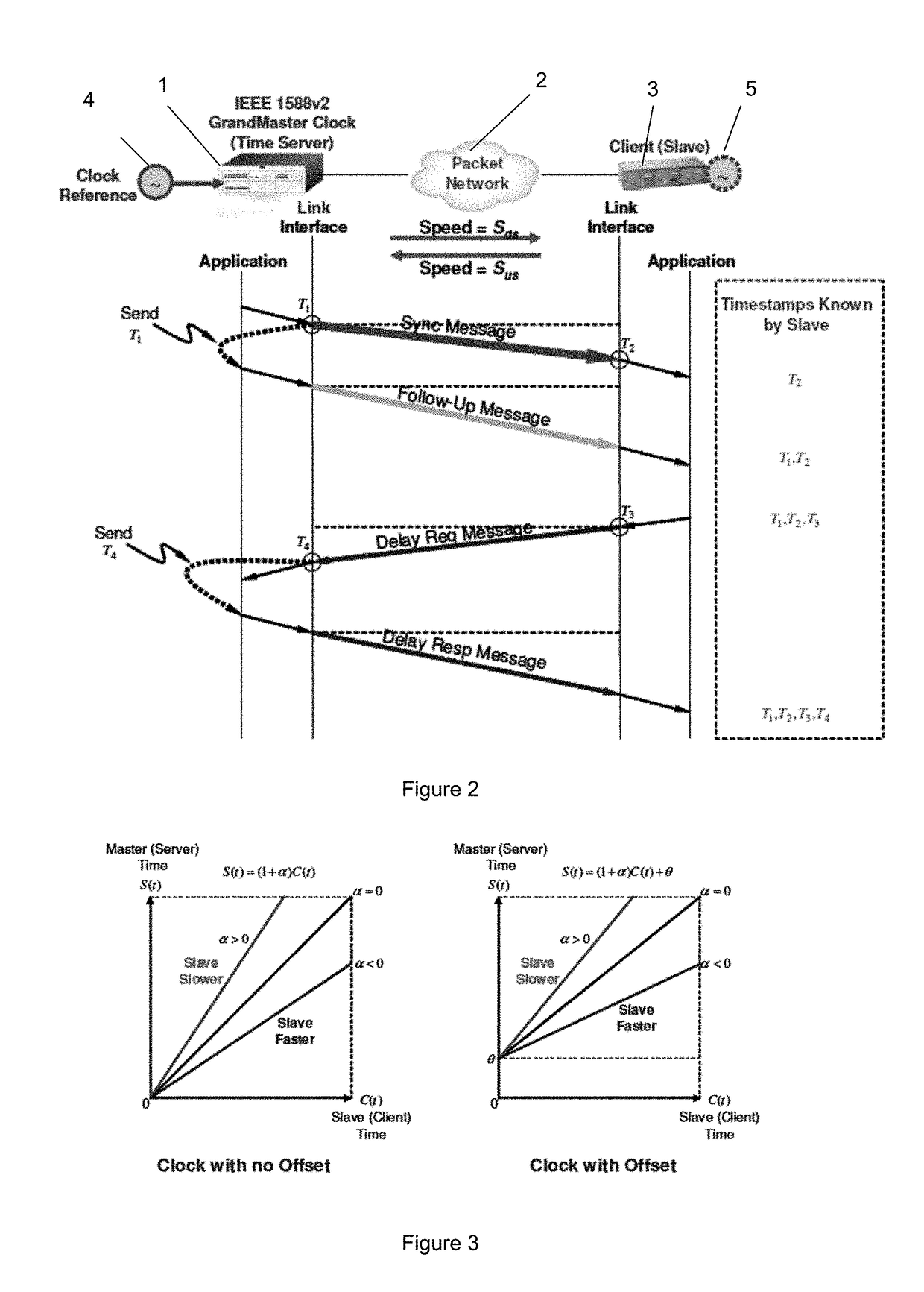Methods and systems for estimating offset and skew using linear programming
a linear programming and offset technology, applied in the direction of synchronisation signal speed/phase control, synchronisation arrangement, electrical equipment, etc., can solve the problems of not being economical for small cell networks, increasing the initial installation process of base stations, and seeing an exponential growth in the number of cell sites
- Summary
- Abstract
- Description
- Claims
- Application Information
AI Technical Summary
Benefits of technology
Problems solved by technology
Method used
Image
Examples
Embodiment Construction
[0040]At their broadest, aspects of the present invention provide for methods and systems which are arranged to synchronize a slave clock in a slave device to a master clock by solving a linear programming problem which takes account of the asymmetry in the transmission rates between the master and slave devices to derive an estimate of the skew and offset of the slave clock relative to the master clock.
[0041]A first aspect of the present invention provides a slave device connected to a master device having a master clock over a network, wherein the slave device includes a slave clock and a processor, and wherein the processor is arranged to: exchange with the master device, timing messages and record timestamps which are: the time of sending of said timing messages from the master device according to the master clock; the time of receipt of said timing messages according to the slave clock; the time of sending of said timing messages according to the slave clock; and the time of re...
PUM
 Login to View More
Login to View More Abstract
Description
Claims
Application Information
 Login to View More
Login to View More - R&D
- Intellectual Property
- Life Sciences
- Materials
- Tech Scout
- Unparalleled Data Quality
- Higher Quality Content
- 60% Fewer Hallucinations
Browse by: Latest US Patents, China's latest patents, Technical Efficacy Thesaurus, Application Domain, Technology Topic, Popular Technical Reports.
© 2025 PatSnap. All rights reserved.Legal|Privacy policy|Modern Slavery Act Transparency Statement|Sitemap|About US| Contact US: help@patsnap.com



